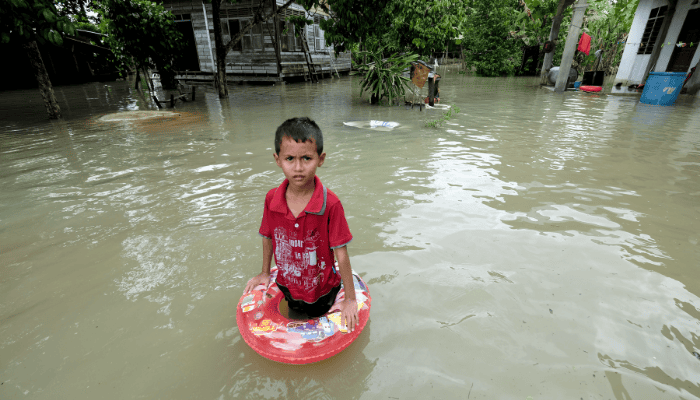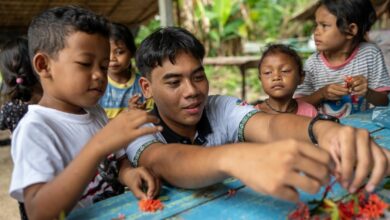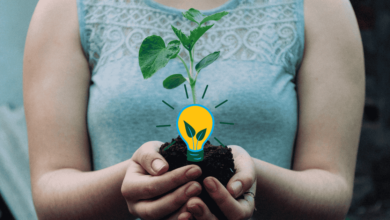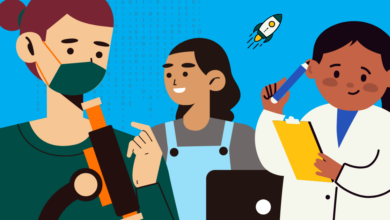A new UNICEF report – The Climate Crisis Is a Child Rights Crisis – shows that nearly 1 billion children live in one of the 33 countries ranked “extremely high-risk”. That’s almost half the world’s 2.2 billion children.
The report ranks countries based on how exposed children are to climate and environmental shocks – like floods and heatwaves – and how well they can cope, based on access to health care, education and other essential services.
Malaysia is ranked 61 in the Children’s Climate Risk Index (CCRI). That puts us among the top 100 countries where children are most at risk. Children in the Central African Republic are at the highest risk – ranked number 1. On the other end, Iceland is the least vulnerable, sitting at 163.
View this post on Instagram
No child is safe from the climate crisis
“For the first time, we have a complete picture of where and how children are vulnerable to climate change, and that picture is almost unimaginably dire”, said Henrietta Fore, UNICEF Executive Director.
“Climate and environmental shocks are threatening the full range of children’s rights. Clean air, safe water, food, education, housing, protection from exploitation – even the right to survive. Virtually no child’s life will be unaffected.”
Check out what the Children’s Climate Risk Index reveals:
- 240 million children face coastal flooding
- 330 million are exposed to river flooding
- 400 million face intense cyclones
- 600 million are at risk of vector-borne diseases
- 815 million are affected by lead pollution
- 820 million face dangerous heatwaves
- 920 million struggle with water scarcity
- 1 billion children breathe toxic air every day
READ >> Reimagine a greener planet. Young people for Climate Action
A Climate Crisis disconnect
Here’s the twist. The places suffering the worst climate impacts aren’t the ones causing the most damage.
The 33 “extremely high-risk” countries only produce 9% of global CO₂ emissions. Meanwhile, the top 10 polluters pump out nearly 70% of all emissions.
In Southeast Asia, Brunei and Malaysia have the highest CO₂ emissions per capita – at 16.64 and 7.6 metric tonnes. But countries like Myanmar, Cambodia, and the Philippines have the lowest emissions in the region, and yet their children are among the worst affected.
The message is clear: Children in low-emission countries are paying the price for a crisis they didn’t create.
And unless we act fast, they’ll keep suffering. Children are more vulnerable than adults to extreme weather, toxic pollution, and disease. They simply can’t fight off what’s coming alone.
View this post on Instagram
Bold action needed for a Liveable Planet
UNICEF is calling on governments, businesses and world leaders to act now before it’s too late. Here’s how:
- Invest in climate resilience.
We need stronger water, health, education and sanitation systems to protect children and communities from climate shocks. - Cut greenhouse gas emissions.
To limit global warming to 1.5°C, countries must slash emissions by 45% by 2030 (compared to 2010 levels). No excuses. - Teach climate in schools.
Give children and young people the skills to adapt, innovate and lead on climate action. Prepare them for what’s ahead. - Include young people in decisions.
From national plans to COP26, children and youth deserve a seat at the table. It’s their future. - Build back greener.
The recovery from COVID-19 must be low-carbon and inclusive so future generations aren’t left to clean up our mess.
Youth climate activists from around the world – Farzana Faruk Jhumu (Bangladesh), Eric Njuguna (Kenya), Adriana Calderón (Mexico) and Greta Thunberg (Sweden) – say it best:
“We must treat climate change like the crisis it is. Act now, so children can inherit a liveable planet.”
This report follows the IPCC Report : A Code Red for Humanity. The warnings are loud. The time to act is now.
View this post on Instagram




